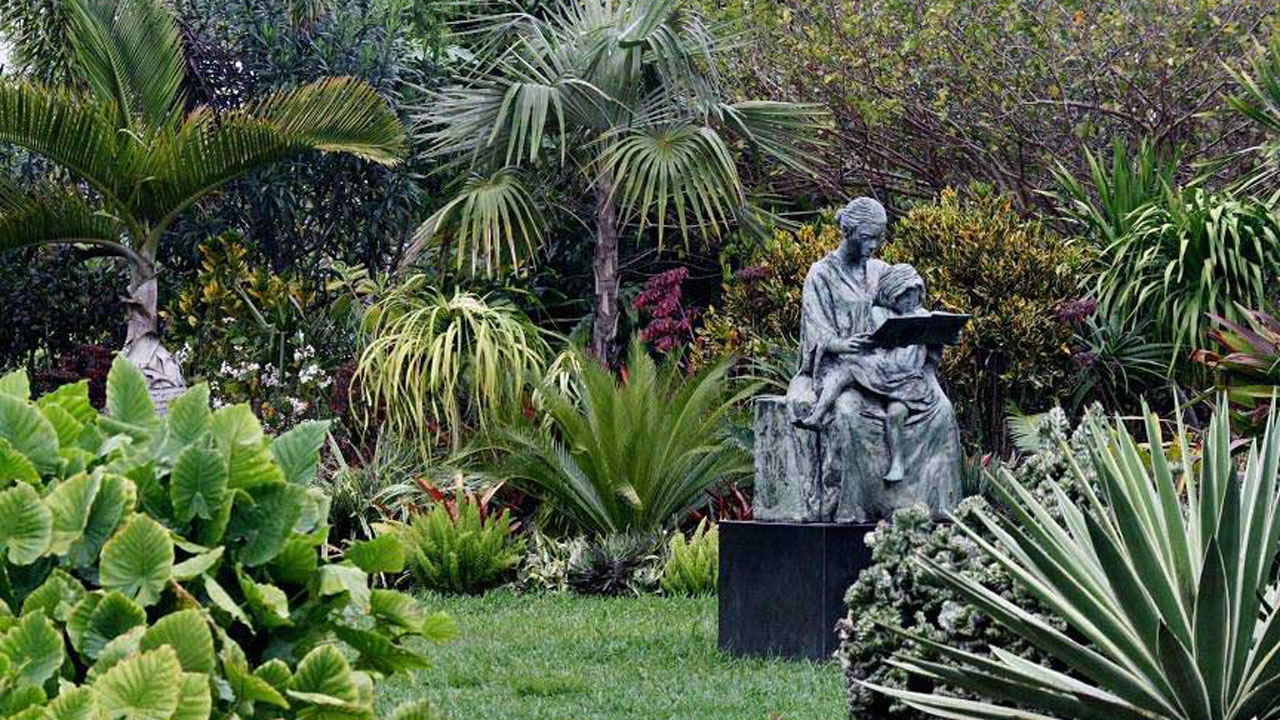Foliage in the garden
Garden Design
There are plants that sport dramatically colored and patterned leaves all year round, Clever garden designers use these colored and patterned leaves for year- long color, especially in shady areas where flowering plants don’t grow so well, or to provide color when flowering plants have finished.
To create impact mass plant a single color or combine multi-colored or variegated foliage with green leaved plants. Vary heights by planting tall plants such as dracaenias, gingers, tree ferns, tree begonias or gold and green dust plant (Aucuba japonica),with low clumping plants such as clivias or bromeliad. Also vary leaf shape and texture to add interest to foliage- only plantings.
Foliage First, Foliage Power
For many gardeners, leaves are preferred over flowers. Flowering plants in the garden can be fickle-we love them, but flowers are seasonal. Foliage,, silhouettes and texture layered through out the design gives a garden longevity and beauty through all seasons.The fact is, a planting of green pallettes fascinates as much as the show of flamboyant blooms. Of all colors. green is viewed and are perceived most easily. Using various shades of green only and interweaving delicate airy foliage with coarser leaves creates an impressive tapestry that is soothing to the eyes. In an all-green garden, a single plant with bold,dramatic foliage assumes the focal point where flowers would usually stand.
It has equal impact as accent plants. If greens foliar offering weren’t riches enough, leaf hues span the entire color spectrum. Foliage artists can dabble in shades from the smoky black of pennisetum glaucum ‘purple majesty’,(a tall ornamental millet with dark purple leaves that offers vertical interests), and snake root (Cimicifuga racemosa) to ghostly silver-_white of Artemisia lactiflora and Eryngium. Purple, Red, blue, silver, ,and golden all supply ingredients for composition of vibrant gardening master pieces.
Color splattered leaves, such as found in Coleus (Solenostemon spp.) and Croton, match almost any other leaf or flower colors. Every foliar hue has a special effect in the border. Green calms and soothes, which is why gardens designed mainly with greens offer welcome relief in urban minimalist settings and meditational refuges such as Japanese tea gardens. Blue and blue-green foliage, found in fescue and blue grass, create a cool and elegant link to other colors in a garden. Blue leaves mixed with purple leaf plants and magenta flowers look spectacular. Purple and burgundy anchor garden borders giving their solidity. Warm reds in Coleus, several cultivars of Castor bean (Ricinus communis) and ornamental grasses raise the pulse of foliar compositions with excitement and drama. Yellows have the same upliftment effect as sunshine in the border.
Gray and silver foliage play magic leaf tricks. Although grey is a neutral mix of other colors, it reflects hints of complimentary color partners. Next to Red, it becomes slightly green. Paired with violet, it appears yellowed. Grays placed near orange have a blue tinge.
Bold and Beautiful
Many of the most dramatic colorful foliage plants are natives of tropical and subtropical regions where they grow naturally in rain forests and other moist, shaded areas. Some are also selected for use as indoor plants, One of the easiest is the variegated spider plant (Chlorophytum comosum ‘Variegata’) As it grows it sends out plantlets on long stalks much like spiders dangling from a thread. Spider plants look particularly good in hanging baskets or tall pots.
Indoor and Shade plants
Other indoor foliage that work well in shade gardens include prayer plants, rex begonias, and calathea. In sunny areas large and colorful crotons bring a real splash of color. Cooler options include hostas, which thrive in shaded spots. They are easy to grow in moist sheltered positions. Where conditions aren’t ideal, grow in pots in a shaded spot
Black Leaves
One of the most striking of all is elephant’s ear (Calocasia esculenta) particularly forms with large black leaves such as ‘Black Magic’ which has glossy purple black leaves. The leaves can be up to 1m long on plants that stand 1-1.8m high. They look striking mass planted or combined with shades of green. Elephants ear can be grown in the ground or in large containers, but need moist soil and a warm, shaded position with shelter from the wind.
Tropical Style
The secret to designing exotic lush tropical garden is to use different-sized palms to create a three-tiered effect. For a tall palm, you can’t look past an Alexander or Bungalow . Majestic palms are a happy medium, while Cascade palms are great for completing the lower parts of your tropical garden. To really give your garden a tropical flair mix it up with exotic vibrant foliage, which will add bursts of color and create contrast and drama. There are many colorful plants that also love shade.
Cordylines are a tough plant that will enhance the tropical flavor of your garden. Try the fuchsia shades of Cordyline rubra and Cordyline fructicosa ruby. Or for a splash of lime, try Cordyline fructicosa kiwi.
Bromeliads
With their symmetrical foliage and multitude of colors, bromeliads make fascinating plants. They don’t even have to be planted in the garden –they are equally happy attached to tree trunks or in pots. .Guzmania will give you a beautiful flower or if it’s a wow factor you want ,plant the giant Bromeliad alcanterea.
Tip
You can sprinkle art pieces and pottery throughout the plantings to add a personal and designer’s touch.
Care
To keep all foliage plants looking good, remove old and damaged leaves and apply a mulch of well-rotted cow manure around the roots. Keep well watered. Pests include caterpillars, and grasshoppers, which chew leaves and mite which is a minute insect that feeds under foliage especially where conditions are too dry or too dark.
Get the latest news delivered straight to your inbox every day of the week. Stay informed with the Guardian’s leading coverage of Nigerian and world news, business, technology and sports.












0 Comments
We will review and take appropriate action.